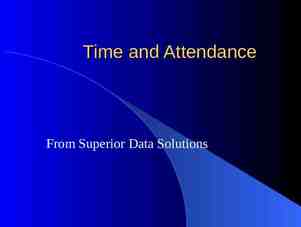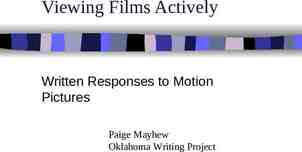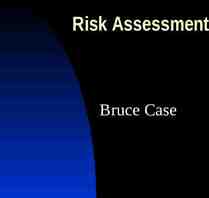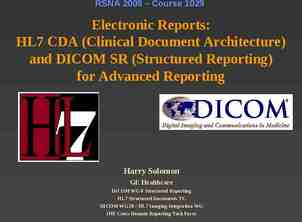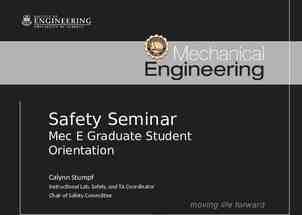Organizational Change Process Training Team B J. Derricott,
26 Slides2.71 MB

Organizational Change Process Training Team B J. Derricott, Danielle Garth, Sylvia Long, David Obiora, Pleshetta Williams AET/560 August 08, 2016 Melanie Latin

Organizational Overview The University of Phoenix (UOPX) is an American for-profit institution of higher learning, headquartered in Phoenix, Arizona, United States. The university has an open-enrollment admission policy, requiring a high-school diploma, GED, or its equivalent as its criterion for admissions. The university has 91 campuses worldwide and confers degrees in over 100 degree programs at the associate, bachelor's, master's and doctoral degree levels. It is a wholly owned subsidiary of Apollo Education Group Inc., a publicly traded (NASDAQ: APOL) Phoenix-based corporation that owns several for-profit educational institution. Wikipedia, the free encyclopedia

In order to embrace the desired change, this training program will equip and prepare participating employees’ on: How to understand and overcome resistance to change The secrets to working effectively when everything is changing How to increase risk-taking behavior and become more flexible The 5 stages of adjustment following a dramatic change How to build “personal hardiness” and use it as a buffer against stressful events Ways to handle workplace anxiety

Strategic Restructuring Goals To regain both employer's and employees’ loyalty and trust through increased employees’ work performance. To increase employees job performance as directed and guided by the change models.

Theories of Practice: 1 “Effective change efforts are built on a drive to achieve outstanding performance” (Spector, 2013, p. 155). Rationale: The success of the transformational period is directly correlated to employee performance (Spector, 2013, p.155)

Training Program Staff will need training for the new method of accepting students for loans to make sure everything is done legally and ethically. A two day training program will be delivered to employees. On day one, the training program will focus on communication. On day two, the training will focus on coping with change. The training will be delivered in the training room section of the Human Resources beginning from 9am each to 5pm of each day.

Training Program based on: Lewin’s Change Management Model The training program will implement the three steps to change: Unfreeze Period: It is natural for people/employees to resistance change so, to surmount this trend, as a result, unfreezing phase or period is needed during which employees are prepared and inspired through communication while explaining the rationale for the intended change.

Lewin’s Change Management Model Step 2 Transition Period: As soon as change is introduced, the organization proceeds into a transition period, of which its duration depends on the organization. Effective and inclusive leadership is essential to achieving a successful change. (Spector, 2013)

Lewin’s Change Management Model Step 3 Refreeze Period: Once the needed change has occurred and accepted by all concerned, then the organization can now resume its normal duties and activities again, making thing to run effectively in the new direction and order in the new management. (Spector, 2013)

Theories of Practice: 2 “Effective change efforts are built on a drive to achieve outstanding performance” (Spector, 2013, p. 155). Rationale: The success of the transformational period is directly correlated to employee performance (Spector, 2013, p.155)

Training Program based on: McKinsey 7-S Model This model proposes a well “rounded” and “inclusive” appeal to organizational change. It holds seven factors that work together as a joint driver of change. Among the benefits of this model include the fact that provides an applicable technique to analyze to understand and know your organization. It also offers a guideline for transformation through a combination of logical and passionate elements to change while putting into consideration that all elements work as a whole must be adopted jointly in other to achieve the most from it. The McKinsey 7-S Model is comprised of the following factors: Employees Common Values Structure Strategy Style Systems Skills Spector, 2013

Strategies to overcome resistance, create commitment and offer incentives

Incentives Purpose Incentives are tools used to encourage, motivate, or reward employees for exceptional job performance Incentive tools can range from monetary donation, certificates, or just a positive word or two In the process of this training program, we want to offer incentives to” regain both employer’s and employees’ loyalty and trust through increased employees’ work performance”

There are various ways that leaders can build trust in their teams and ways that they can lose it. Establishing and maintaining integrity is the foundation of trust in any organization. This must be established at the top and then be implemented down the chain. Communication of the vision and their values: communication is the key tool for organizational success. Leaders define the vision and mission for the organization. Consider all employees as equal partners is established when the lowest or newest employee feels valued. When management is gets out and mingles with employees about their wants, needs and sometimes suggestions, it makes employees feel part of a team.

Cont’d Focus on shared goals- when employees share a vision and they all work collaboratively to ensure the success of the organization, more positive results are developed. Do what is ethical and right- follow instinctive sense and avoid any personal agenda. Create positive atmospheres. Offer incentives when employees deserve it.

Strategies for commitment Include everyone's input on the change being implemented The change agent needs to have an open door policy so he or she can address the concerns of the employees. The use of teams are vital. You must be able to pair people together that have the same drive and passion towards the change.

When forming the change team, it is important that the Change Team be: Cohesive - with a similar view of the end result and the ability to deliver clear, consistent messages to their areas Organized - as there will be many OCM activities that will need to be coordinated Committed - to the OCM team and their areas The OCM Team is the glue that helps keep the employees motivated

When identifying potential change team members; characteristics to look for in the individuals include: Are they respected in the areas they represent Do they have a genuine interest in being involved Are they oriented, with strong soft and interpersonal skills Do they understand the business area processes and roles Are positive and can explain the overall benefits of the change Are they visibly willing to support the change Are they good listeners Are they good communicators Are they quick to recognize where support is needed and act to assist others (Sap Developer Network, 2009)

Shared Diagnosis Shared diagnosis in this context is a tool used to discern as many organizational problems as possible, so that management and change leaders can use the information to determine specific actions to be taken in order to achieve desired goals and or objectives through intervention.

Shared Diagnosis Identifying barriers : In this case, the lack of trust between employees and management. Poor communication among employees, and between employees and management. Work out a solutions and strategies for intervention. Set goals and objectives. Develop the best approach to accomplishing the desired results.

Data for continuous improvement The most effective and productive method the team used for data collection was the individual face to face and observation, or rather one-to-one. In this way, respondents were more open to expressing how their actual felt without the fear of being influenced and, or being intimidated by others. And most importantly, a lot was learned from their body language as compared to the other means of data collection.

Training Assessment Pre and post assessment surveys are used to evaluate employees’ job performance regarding an increase in communication and an increase in positive response to change. Continuous monitoring and adjusting strategies to achieve desired outcome

Measuring Change Process Organizational evaluation Departmental evaluations Inter-department evaluations Conduct independent evaluations Creating focus groups Monitor frequency of effective staff meetings

Continuous improvement monitoring Information on the rate of communication amongst employees and between employees and management will be tracked and compared prior to meetings Information will be collected monthly from the following avenues: Bi-weekly team meetings Monthly on, “one-on-one” basis and through team meetings. Through emails, internal memos, and phone-calls. Suggestion box Employee feedback

Conclusion Through training and implementation with shared diagnosis with the use of effective communications, employees will feel more committed as they took part in the decision making towards effecting the change. Communication is a primary tool used in the process of change. The leader must discuss in a clear and precise manner the organizational purpose. In this case, the University of Phoenix goal is to offer the best educational services to all students regardless of race or nationality. Effective communication can motivate employees and prepare them for the change. Individuals are usually skeptical about changes especially when the appearance is going well. Effective change leaders does not only master the art and skills of communication, but can put together some given information and organize it in a way that would make employees embrace the needed change

References Nadler, D.A. and Tushman, MLA (1980). Model for diagnosing organizational behavior. Organizational Dynamics, 9(2) 35-51. https://smaillbusiness.chron.com/pros-cons-congruence-model-36161.htm. Galley, J.W., Gilley & HS. McMillian, (2009). “Organizational change: Motivation, communication, and leadership effectiveness,” Performance Improvement Quarterly 2009, 21(4): 75-94. Spector, B. (2013). Implementing organizational change: Theory into practice (3rd ed.). Upper Saddle River, NJ: Prentice Hall. Evaluation Briefs, (16). (2008), Data collection methods for program evaluation: Retrieved from https://www.cdc.gov/healthyyouth/evaluation/pdf/brief16.pdf Google Images. (2015). Retrieved from https://images.google.com/


